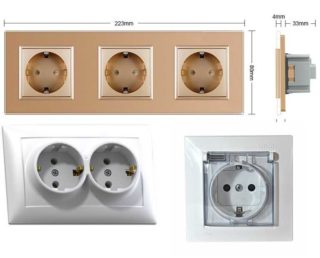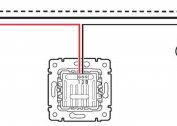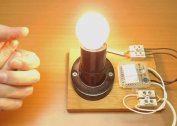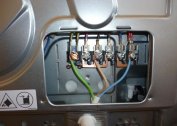An electrical outlet is an integral part of power networks in any room. Points are set in every building, apartment, cottage, street and other places. The modern market of electrical materials offers different options, sometimes fundamentally different models from each other. Before buying, you need to familiarize yourself with the main types of devices, advantages and disadvantages, and how the outlet is arranged.
Electrical Outlet Device
A classic electrical outlet is assembled from a plastic external panel (the material may be different, the purpose is to cover the internal parts) and a non-conductive base with microcontacts and plugs. The latter are needed to secure the device plugs.
The base is made of heat-resistant plastic or ceramic, the main thing is that the material does not conduct electricity and does not melt during short circuits, fires. Plastic is cheap and durable, ceramics cost much more and are very fragile. The number of contacts, the shape and size of the outlet depend on the type and purpose (for example, three-phase have six contacts, two-phase single-phase), as well as the country of manufacture. In the production are guided by the provisions of GOST or special specifications.
Contact Materials
 Microcontacts of electrical products should be strong enough, well fixed, conduct electricity and not “go away” for a long time. Usually use the following materials:
Microcontacts of electrical products should be strong enough, well fixed, conduct electricity and not “go away” for a long time. Usually use the following materials:
- bronze - suitable for all types of rooms, different operating conditions;
- brass - it is used only at a normal level of humidity in the room, it is forbidden to install in baths, bathrooms, on the street - they will quickly fail, a short circuit, burnout of devices may occur;
- tinned brass (protected from corrosion) - perfectly tolerates high humidity, special treatment will not allow moisture to affect the metal and destroy it.
Brass microcontacts are the most vulnerable. The metal is pale yellow, shiny. With constant exposure to moisture, it oxidizes and rusts. The increased stiffness of the material does not allow the contacts to spring, which over time leads to a deterioration of the connection - under pressure, the plugs of the plate diverge and cease to close the electrical circuit. Additionally, you have to install springy "petals" that make contacts.
Processed - tinned - brass is very different from the original material. The color becomes white, matte. Thanks to the anti-corrosion coating, the contacts are not oxidized, they spring easily and retain their initial bend. Therefore, the material is used in street outlets and installed in rooms with high humidity.
Contacts made of bronze are rare. You can recognize a socket with bronze elements at a price - much higher than classic models. Color is dark yellow, opaque. The material is well springy, keeps its original shape and provides a reliable connection for a long time.
Ground contact
 A phase connection is a must for such devices. The ground contact is optional and is found in special models (must be specified upon purchase). These sockets are purchased for:
A phase connection is a must for such devices. The ground contact is optional and is found in special models (must be specified upon purchase). These sockets are purchased for:
- high-power devices and equipment;
- devices "sensitive" to the quality of electricity (in particular, electronic);
- appliances that use water in their work (for example, washing machines and dishwashers).
In addition, grounding types of sockets are installed in rooms with high humidity and on the street - a safety requirement when working with electrical devices and wiring. Working grounding in the device of the socket will allow to protect users and equipment.
You can install power points without grounding contacts only in dry rooms and when connecting low-power devices: table lamps, charging, convectors, etc.
Prices for simple models are lower. The depth of landing in the wall is less, so a small hole is required to be drilled under them. However, for powerful devices such sockets are not suitable (including computers). The danger lies in the accumulation of static residual electricity, which is detrimental to electronics.
Wire connection
 The microcontacts of outlets are equipped with small plates that must be connected to the wires of the electrical wiring of the room. Use screws or clamping mechanisms. The latter allows you to quickly connect without using a screwdriver.
The microcontacts of outlets are equipped with small plates that must be connected to the wires of the electrical wiring of the room. Use screws or clamping mechanisms. The latter allows you to quickly connect without using a screwdriver.
Screw are divided into two types:
- option with fixing the wire at the end in the form of a loop;
- A way to directly fix the end of the cable.
The first method requires a long connection time: the screws are completely unscrewed, the wire is twisted with a loop (you can use round-nose pliers), then the loop is put on the bolt, the final look is formed, fixed with a nut. The second - the connection is fast - the screw is loosened, the end of the cable is inserted into the resulting gap, tightly screwed.
Contacts during operation are constantly exposed to certain influences - heating, cooling, pressure. Over time, microcontacts weaken, can become worthless. Therefore, it is necessary every six months to check the condition of outlets of any kind and correct the connection: tighten the screws, tighten the plates.
Modern sockets are often installed in blocks - 3-4 pieces nearby and under one external cover. Such a parallel connection provides for an elderly connection of wires to each power point, jumpers are carried out in separate connectors.
Power Outlet Classification
The electrical outlet has a straightforward structure, but in recent years the number of models and classes of such devices has grown significantly. It is enough to familiarize yourself with the main varieties of the mechanism in order to choose the most suitable option.
By voltage and current
Technical characteristics are the most important indicators that should be considered when choosing. They calculate the necessary voltage and current strength. The first value distinguishes sockets:
- single-phase for 220-240 V - a standard option in the territory of the Russian Federation and some former union republics;
- single-phase at 100-127 V - USA, Japan;
- three-phase at 380 V - more often installed in production.
In addition to the voltage, the nominal bandwidth is taken into account - the current strength that the device can pass for a long time. Standard sockets are designed for 10-16 A. For devices of high power (household heaters, electric stoves, other similar), a value of 32 A or higher is required. Such power points are called power: they differ in size, more heat-resistant materials, contact density, price.
By type of installation
Sockets can be installed in two different ways - inside the wall (other surface) and outside. The internal socket requires a special hole in the surface: the socket will be ditched, cut out in panels. After installation, such a device is almost imperceptible - as flush as possible with the surface.
The laid on closed socket is suitable for open installation. It is mounted directly to the wall on the rails; no socket is required. They are often used on the street.An external power point is suitable for garages, technical premises, cabins - places where the aesthetic component of the interior is not the main thing.
Retractable sockets (often quadruple) are a novelty in the market of electrical materials. They are convenient to use in the kitchen. You can mount it in the countertop, to the bottom of the wall cabinet, the side parts of the furniture and open as necessary.
IP degree of protection
The latest models of single and multi-socket outlets have an additional option - IP protection. The technical characteristic indicates the protection of the device from moisture, dust, debris. It is necessary to pay attention to the indicator if the food point needs to be installed in a room with "extreme" conditions or on the street. The following values are often found:
- 20 - normal conditions of use, heating in winter;
- 21, 22 - tolerate low temperatures well (additional heating is not required);
- 43, 44 - rooms with high humidity, places near water;
- 54, 55 - the most protected, installation on the street is permissible.
These options satisfy the usual requirements for the construction of houses, cottages. It is difficult to find devices with higher values, such a need rarely arises.
Number of sockets in one case
For convenience, several power points are built into one housing. If two or more outlets are installed, the design is called an outlet unit. In addition, they establish additional connection points - Internet, USB, television, and others. Standard options for sockets in blocks:
- single;
- double;
- triple.
In new buildings, blocks of single power points are closed by a common panel. Podrozetniki do separately for each or one common.
Power Points with Advanced Features
Sockets are installed everywhere - in separate toilets on the street, garages, industries, office and residential premises. Therefore, manufacturers are constantly trying to improve the device, make design changes and add interesting details.
With power control features
When repairing a capital level or laying a new electrical wiring, they are guided by modern safety requirements - the connection of circuit breakers, the fastening of RCDs in the corresponding sections, stabilizers and transformers.
But in most rooms, wiring was installed more than 30-40 years ago. Therefore, there is no protection against power surges, power surges - there are only Soviet-style plugs. However, for devices with electronic filling, connecting to the network through such power points is fraught with a quick breakdown - any failure will cause the circuit board, electrical elements to burn out. Electricians recommend installing modern outlets with built-in voltage control or RCD.
With enhanced ease of use
Individual models are equipped with additional features that can solve a number of problems. Timer - allows you to set the time to disconnect the device from the network, just set the required time on the outlet. There are mechanical and electronic options.
An extension cord is an ordinary outlet with a wire that is hidden in the wall. The socket will need to be cut larger, but such an extension cord will not be lost, and will not take up space during storage.
Childproof
Such protection is installed in two versions - plastic shutter shutter and rotary types. The first opens with simultaneous pressure with the appliance fork. In the second embodiment, it is necessary to pry off the upper protective frame and rotate, after which the inlet openings appear.
Design Features
The models of recent years have special structural elements that greatly distinguish them from the original mechanisms. The principle of operation - connection to the electric network - remains the same.Additional points - the “smart home” system, control from the phone (for example, turning the fireplace on and off) are familiar to few. For standard rooms, such features are not important, but if you plan to install the latest systems, other outlets will not work.
- With timer
- Childproof
- With remote control
Types of electrical outlets in different countries
 Domestic and industrial networks in different countries have different rated voltages. In addition, the shape, the number of inlets, and their location are different. Travelers often have difficulty connecting their own devices - you need to find the appropriate adapter.
Domestic and industrial networks in different countries have different rated voltages. In addition, the shape, the number of inlets, and their location are different. Travelers often have difficulty connecting their own devices - you need to find the appropriate adapter.
In some countries, the plugs have three plugs, and the cross section may differ. For example, in Switzerland, three round triangle-shaped plugs are used. In England, the USA, Canada and other pins, rectangular (English), are located in different places.
To choose the best outlet, you need to know the general voltage of the network, the level of conductivity, the expected features ("smart home", outlet block, other functions). If in doubt, when choosing and buying, you can contact the seller or the master for advice.











